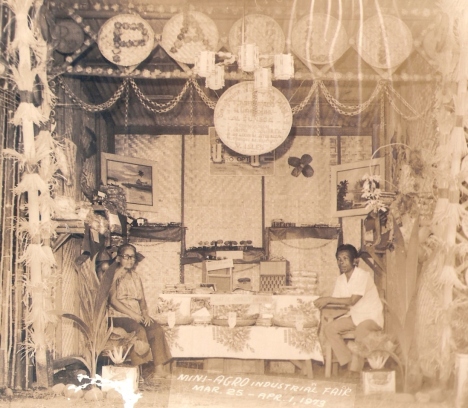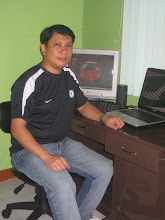Brgy. Pauli (1 and 2)
The past, present and popular name of the barrio Pauli. It was name after the stream that passes through the barrio going to the northern sitio called alibung-bungan and goes westward then eastward four time near the lot of Mr. Cristeto Lucido before it goes to Kalibato Lake.
When Pauli was first separated from the town of Nagcarlan, the President or Kapitan was Mariano Isles. The policeman were called commisario. Mariano Isles served for two years. There were very few people yet living and the town could stand alone so the town was given up again to Nagcarlan. Then Pedro Urrea made efforts to make again the barrio a town, it was again separated from Nagcarlan, One of the accomplishments by him was the improvement of the road. Formerly the road infront of the house of the late Rizalino Urriquia up to the house of the late Hiladia Perez Urrea it was straightened after a lapse of two years the inhabitants of the town could not support the municipality, so it was again returned to the town of Nagcarlan. From 1915-1918 on of the three councilor of the town of Nagcarlan felt that it was very unfair for the barrio of Pauli that even the school had not improved and the President gave only two teachers, when there were excess of children for each teacher. So Mr. Agustin Vista and Mr. Fortunato Arban organized a secret plan of organizing a new town of Pauli, it was in the year 1919 that the barrio was separated from Nagcarlan for the third time. When it was already a town it was divided into different “puroks” and the former Pauli became the Poblacion. About ¼ of the whole Pauli remained the present Pauli and in northern Pauli became the sitio called “Alibung-bungan”.
Alibung-bungan is the only sitio of Pauli which lies in the northern part of the Poblacion. The original families who lived in this sitio were Ricardo Isleta, Pedro Urtola, Vicente Perez, wife of Romualdo Oro, Justo Perez, Hiladia Perez who are brothers and sisters, Luduvico Urtola, Mariano Formales, Paula Formales, Melecia Formales and Francisco Carpena.
In the sitio of Alibung-bungan original families were Antonino Montermoso and Lucena Sumague, Juan Austral and Marina Isleta, Juan Urriza, Placida Isleta, Dorotea Ciar and Elvira Sumiran.
Before Pauli was separated from Nagcarlan, which was during the time of the Spaniards, Filipino were given punishment for mere accusations. Ciriaco Isleta and Juan Imbo were captured and killed by the Spaniards. Houses were burned because they taught they were the hiding places of “insurectos”. The Spaniards did not stay long later the Americans came to help the Filipinos, they were very friendly to the people, they gave ration to the poor people. The insurectos were forced to surrender. They paid the guns own by the insurectos.
The following barrio lieutenants were the leaders from the very beginning Spanish regime to the present. The very first appointed barrio lieutenant was Mariano Urtola, second was Lazaro Sumague, third was Romualdo Oro, fourth was Honorio Mesinas, fifth was Rufino Isleta, then Eulogio Urtula who served until the coming of the American. Succeeding him was Wenceslao Isleta as the seventh. Eight was Jose Vistan, and then Bernardino Oro, the tenth was Dominador Bortonel, residing in the sitio of Alibung-bungan. Mr. David Formales was the eleventh, who served during the Japanese time. Then Dominador Bortonel as the 13th and 14th respectively. At the returned of the Americans it was Mr. Florentino Suñiga who was appointed and serving up to the present time.
Even during the Spanish regime this place was never captured nor trespassed by the “Tulisan” or law breaker. There were no uprisings or rebellion against the people and the foreigners who were trying to own us. Disaster done by the Japanese was the burning of houses. All houses in Pauli were burned. Later, the Americans liberated the Philippines and all owners of burned houses were given claim paper to be filled up and sent to the War Damage Commission Office. When this claim were approved by the Rehabilitation Committee Office. Home owners received payments for the destruction. Aside from the money given by the War Damage Commission the members of the Protestant Religion
of Pauli gave voluntary contributions for the construction of the destroyed chapel.
In an encounter in Sta Cruz in 1942, Bienvenido Sumatra, a native of Pauli, a guerilla was killed by the Japanese. Unfortunately on the 26th of July 1944, another native of Pauli, Eugenia Sombilla wife of Mr. Jeremias dela Cruz was also shot to death by the Japanese stragglers who were trying to cross the street of Pauli going northward from the backyard of their house. There was a blackout at that time. The guerillas ran after the Japanese soldier, but the later were able to escape. From that time on the people of Pauli had been always alert. Due to the untiring effort of counselor Jose Oro, the people of Pauli are peaceful and continuing to their best for the betterment of community living.












No comments:
Post a Comment